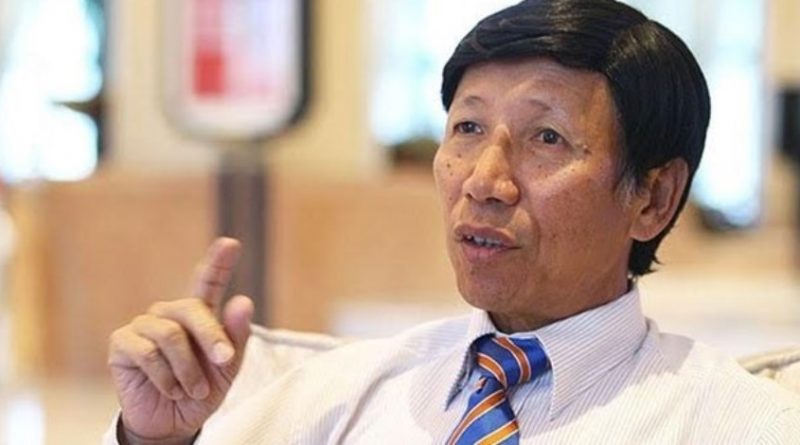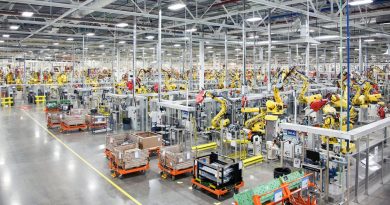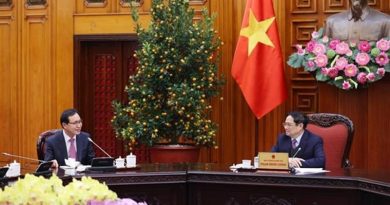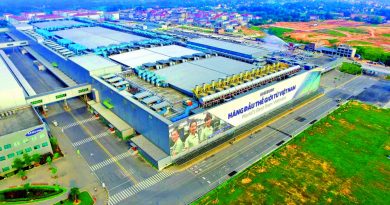Vietnam’s brighter FDI attraction prospects for 2018
In 2017, Vietnam saw soaring foreign investment capital FDI inflows totaling at $35.6 billion, up 44.2 per cent compared to 2016.
Phan Huu Thang, former director of the Ministry of Planning and Investment’s Foreign Investment Agency, deputy chairman of the Vietnam Association of Foreign Invested Enterprises, told VIR about the spotlight review of 2017 as well as the motivation and recommended the strategies in attracting foreign investment capital in 2018.
2017 has been a successful year for Vietnam in attracting foreign direct investment (FDI) capital. What were the highlights of the year in your opinion?
This year quickly overcame expectations both in terms of quality and quantity in foreign investment attraction. Notably, in the ten months of this year, Vietnam reported record high foreign investment inflows with $28 billion primarily from APEC economies. The figure was expected to increase to $30 billion by the end of the year, however, by the end of November, it was already at $33.09 billion, signifying a year-on-year increase of 82.8 per cent. Even more, the final figure was $35.6 billion.
Regarding policies, the government asked the Ministry of Planning and Investment to coordinate with relevant agencies and the provincial authorities of Quang Ninh, Khanh Hoa, and Kien Giang to quickly draw up the Law on Special Administrative-Economic Zones. Despite the heated debate about the contents of the draft law, it will contribute to attracting FDI in the upcoming year once it is approved by the National Assembly next year.
These sweet fruits show that government has been very successful in creating a favourable investment environment for foreign investors, as committed.
The APEC Vietnam 2017 had a wholly positive impact on the country’s FDI attraction this year. What motivations stand behind such an increase in 2018?
The APEC’s role in record high foreign investment and FDI inflows cannot be denied. It is sure that the APEC will position Vietnam as a desirable destination for an increasing number of investors. Thanks for hosting the APEC 2017, Vietnam has become better known among foreign investors, reaching those who had yet to consider investing in Vietnam. Besides, being named among the world’s leading economies, such as the US, Japan, South Korea, Russia, Singapore or China has improved Vietnam’s position tremendously.
Besides, back in 2006-2008 after Vietnam hosted the APEC for the first time, we saw a massive wave of foreign investment, setting an FDI record in 2008 with $71.7 billion. On this basis, Vietnam can be optimistic about foreign investment capital inflows in 2018 as well as the subsequent years.
It needs to be added that 2017 marked the 30th year that Vietnam opened its doors to FDI. During these three decades, Vietnam has gradually affirmed its position in the international arena, producing constant growth that has become one of the major factors attracting foreign investment capital.
This year, the processing and manufacturing, as well as the property sectors, have still received the largest foreign investment capital volumes. Will market dynamics or government initiatives re-route investment flows to other sectors in 2018?
The 4.0 revolution with the appearance of Bitcoin, blockchain, as well as e-wallets, among others, is impacting investment trends on a global scale and Vietnam will not be unaffected. However, we only expect to see distinct changes from 2020 onwards, therefore manufacturing and processing, power distribution and manufacturing, and property will remain the top foreign investment channels in the year ahead. On the other hand, we are looking at increased capital inflows in the M&A market space.
How is Vietnam planning to attract FDI in 2018?
First, Vietnam will continue to focus on attracting high-tech and environmentally friendly projects. Notably, Vietnam will stimulate investment in renewable energy projects, high-tech agriculture, as well as smart cities, among others.
Second, Vietnam will build solutions to create balance in FDI attraction, instead of focusing on Hanoi, Haiphong, Bac Ninh, Binh Duong, Ho Chi Minh City, and Thanh Hoa.
Third, the country will try to attract FDI while keeping our national identity and safeguarding the environment.
Source: VIR







